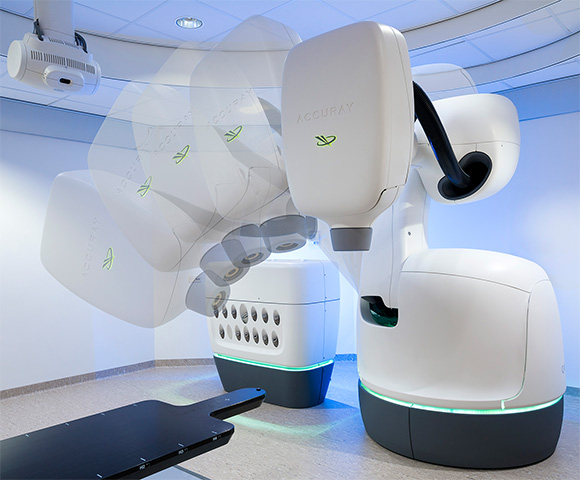How Robotic Technology Is Revolutionizing Cancer Treatment for Pets

Hearing your pet has cancer can be tough news to swallow. Then there are all the decisions you have to make about their treatment plan, such as medications, chemotherapy, radiation, or even surgery. The good news is that veterinary medicine is constantly evolving, thanks to advances in technology and the development of new treatments and procedures. One such innovation, called the CyberKnife, is a non-surgical treatment option that is helping improve outcomes for pets who are diagnosed with cancer.
What exactly is the CyberKnife?
“The CyberKnife is a non-invasive treatment for cancerous and non-cancerous tumors and other conditions where radiation therapy is indicated,” says Dr. Siobhan Haney, a veterinary radiation oncologist at BluePearl Malvern in Pennsylvania. “It is used to treat conditions throughout the body and can be an alternative to surgery for patients who have inoperable or surgically complex tumors.”
Unlike conventional radiation therapy, which may take up to 20 treatments, CyberKnife radiation therapy “uses a robotic arm to deliver the entire therapeutic dose of radiation in one to three treatments.” The robot moves and bends around the patient and provides real-time image guidance so the dose of radiation can be precisely targeted.
The CyberKnife system has more than two decades of clinical proof in human medicine and has been a game changer for hundreds of thousands of human patients around the world. But the arrival of the tool at the BluePearl CyberKnife Cancer Center in Malvern is extra exciting as it is paving the way for the use of this technology in pets. “There is no other veterinary hospital in the world using this treatment,” Dr. Haney says.
What makes CyberKnife stand out from existing cancer treatments for pets?
“CyberKnife is different from other treatments on the market because the robot can move with the tumor as it’s moving, in real time,” Dr. Haney shares. For example, if veterinarians are tracking a lung tumor, as a patient breathes in and out, the lungs will expand and contract, causing the tumor to shift. CyberKnife can continuously track the tumor’s motion and adjust the radiation delivery to follow its movement.
“This allows us to deliver treatments in the lungs and anywhere in the body with submillimeter accuracy,” Dr. Haney explains. This precision minimizes damage to surrounding healthy tissue, making CyberKnife a revolutionary option for treating complex or inoperable cases.
One big victory for the team at BluePearl since CyberKnife’s arrival is the successful treatment of a tumor involving the adrenal gland, which is referred to as an intra-abdominal pheochromocytoma. “The tumor was invading into the vena cava, which is a large, important blood vessel,” Dr. Haney says. “It was determined that surgery was too dangerous because of the risk of creating a leak in the cava, so we treated the tumor with CyberKnife instead.” Due to the treatment, the tumor shrank slowly over time, the symptoms gradually disappeared, and the canine patient is now thriving.
While the veterinary CyberKnife is currently only available at BluePearl, it’s likely the technology will make its way to other clinics in the future, helping treatment for pets with cancer become even more successful.









